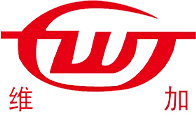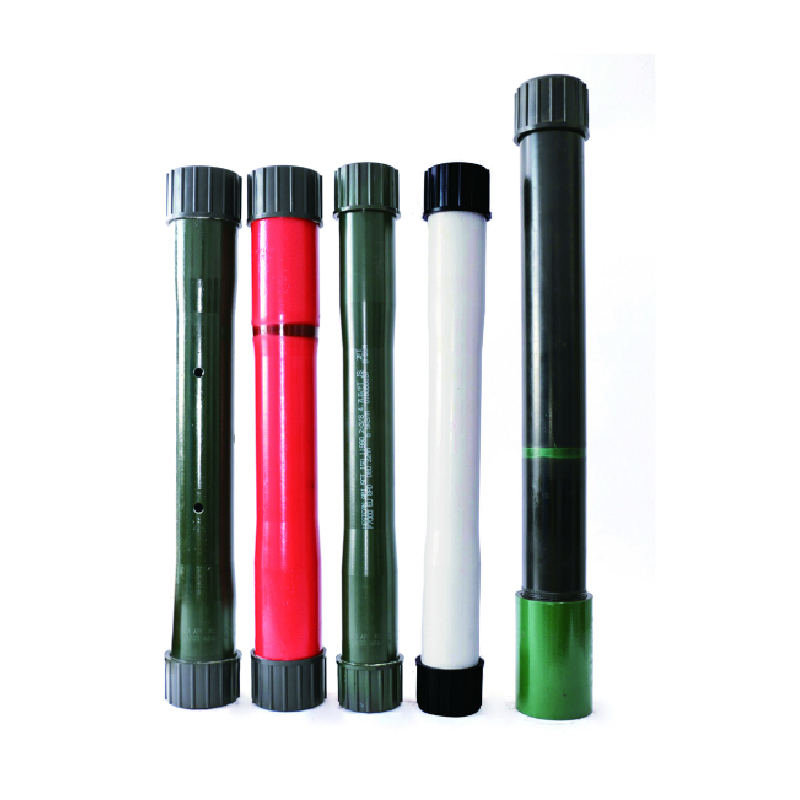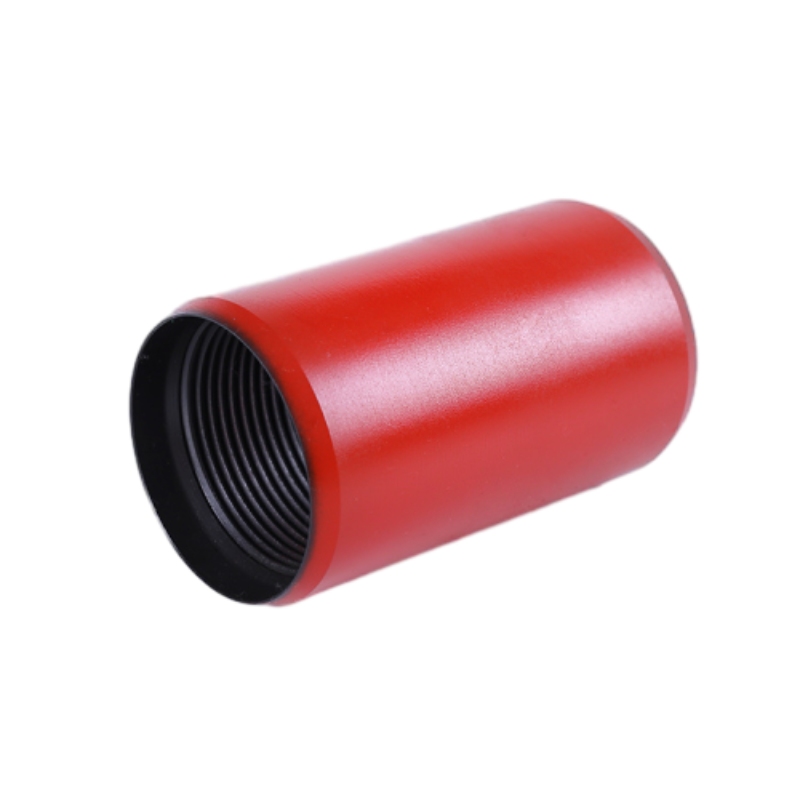High-Performance Tubing Coupling | Steel & Vacuum Hose Couplings
Introduction to High-Performance Tubing Couplings
In demanding industrial environments, the integrity and reliability of fluid transfer systems are paramount. At the core of these systems lies the crucial component responsible for secure and leak-proof connections: the tubing coupling. These specialized connectors are engineered to join tubes or pipes, creating robust pathways for liquids, gases, and slurries under varying pressures, temperatures, and corrosive conditions. From the high-pressure demands of the petrochemical industry to the precision requirements of instrumentation, the performance of these couplings directly impacts operational efficiency, safety, and environmental compliance.
This article delves into the intricate world of advanced tubing connection technologies, exploring their manufacturing processes, technical specifications, diverse applications, and the strategic advantages they offer to B2B stakeholders. We aim to provide a comprehensive overview for engineers, procurement specialists, and project managers seeking optimal solutions for their critical infrastructure needs.
Industry Trends Shaping Tubing Coupling Innovation
The global market for industrial couplings is experiencing significant growth, driven by expansion in the oil & gas, chemical, power generation, and water treatment sectors. Key trends impacting the design and deployment of tubing coupling solutions include:
- **Increased Demand for High-Pressure and High-Temperature Applications:** As exploration and processing move into more challenging environments (e.g., deep-sea oil & gas, high-efficiency power plants), couplings must withstand extreme conditions with enhanced material strength and sealing integrity.
- **Focus on Corrosion Resistance:** Aggressive media and harsh operating environments necessitate the use of advanced alloys and coatings to prolong service life and reduce maintenance costs.
- **Emphasis on Safety and Environmental Compliance:** Stricter regulations drive the development of leak-proof designs and materials that minimize fugitive emissions, particularly for hazardous substances. This includes innovations in vacuum hose coupling technologies to prevent air ingress/egress.
- **Digitalization and Smart Monitoring:** Integration of sensors for real-time performance monitoring, predictive maintenance, and operational optimization is emerging, though less prevalent in the coupling itself and more in the overall system.
- **Lightweighting and Compact Designs:** For aerospace, automotive, and certain industrial applications, reducing weight and footprint without compromising strength is a continuous innovation driver.
- **Standardization and Modularity:** While custom solutions remain vital, the adoption of standardized coupling types (e.g., steel pipe coupling) allows for easier interchangeability, reduced inventory, and faster deployment.
These trends underscore the need for manufacturers to continuously innovate, ensuring their products meet evolving performance and regulatory requirements.
The Precision Manufacturing Process of Tubing Couplings
The production of a high-quality steel pipe coupling is a meticulously controlled multi-stage process, ensuring structural integrity, dimensional accuracy, and optimal performance under various operating conditions. This typically involves:
1. Material Selection
The choice of material is critical and depends on the intended application, media, pressure, and temperature. Common materials for industrial couplings include:
- **Stainless Steel (304, 316, 316L):** Offers excellent corrosion resistance, high tensile strength, and suitability for a wide range of chemical and high-pressure applications. Essential for many steel couplings for pipe.
- **Carbon Steel:** Economical for less corrosive environments and moderate pressures, often with protective coatings.
- **Duplex & Super Duplex Stainless Steels:** Provide superior corrosion resistance and strength for highly aggressive environments (e.g., offshore oil & gas).
- **Exotic Alloys (e.g., Hastelloy, Inconel):** Used in extreme chemical processing or very high-temperature applications where standard stainless steels are insufficient.
- **Brass:** Common for lower pressure and non-corrosive applications, particularly for general-purpose fittings and vacuum hose coupling.
2. Forming Process
The raw material undergoes a forming process to achieve the basic shape:
- **Forging:** Preferred for high-pressure and high-stress applications. Forging refines the grain structure of the metal, enhancing its strength, toughness, and fatigue resistance. This is common for robust steel couplings for pipe.
- **Casting:** Suitable for complex geometries and larger sizes, though generally offering lower strength and potentially higher porosity than forged parts.
- **Bar Stock Machining:** For smaller, intricate designs, components can be directly machined from solid bar stock, ensuring excellent material integrity.
3. Precision Machining (CNC)
After forming, parts are transferred to Computer Numerical Control (CNC) machines. This stage is critical for achieving the precise dimensions, surface finishes, and thread profiles required for leak-free sealing and ease of assembly. CNC machining ensures:
- **Tight Tolerances:** Essential for proper fit and sealing.
- **Smooth Surface Finishes:** Prevents stress concentrations and aids in sealing.
- **Accurate Threading:** Crucial for secure connections.
Advanced multi-axis CNC machines allow for the creation of highly complex internal and external features with exceptional repeatability.
4. Surface Treatment (Optional)
Depending on the application, couplings may undergo surface treatments such as passivation for stainless steel (to enhance corrosion resistance by removing free iron), plating (e.g., zinc, nickel), or specialized coatings.
5. Cleaning and Assembly
Components are thoroughly cleaned to remove machining oils, chips, and contaminants. For multi-part couplings, seals and other internal components are carefully assembled in a clean environment.
6. Quality Control and Testing Standards
Rigorous testing is performed at various stages and on the final product to ensure compliance with international standards and performance specifications. This includes:
- **Dimensional Inspection:** Verification of all critical dimensions using calibrated instruments.
- **Material Composition Analysis:** Spectrographic analysis to confirm material grades.
- **Hydrostatic Pressure Testing:** Subjecting couplings to pressures significantly higher than their rated working pressure to test burst strength and leak integrity.
- **Pneumatic Leak Testing:** Using inert gas to detect minute leaks, especially crucial for vacuum hose coupling applications or gas lines.
- **Vibration and Thermal Cycling Tests:** Simulating operational stresses to evaluate long-term durability.
- **Salt Spray Testing:** For corrosion resistance assessment.
Products typically conform to standards such as **ISO 9001** (Quality Management), **ANSI/ASME B1.20.1** (Pipe Threads), **ASTM** (Material Specifications), and sometimes **NACE MR0175/ISO 15156** for sour service applications.
The typical service life of a well-engineered tubing coupling can range from 10 to 30+ years, depending on the material, application severity, and maintenance regime. Proper installation and material selection are paramount to achieving maximum service life.
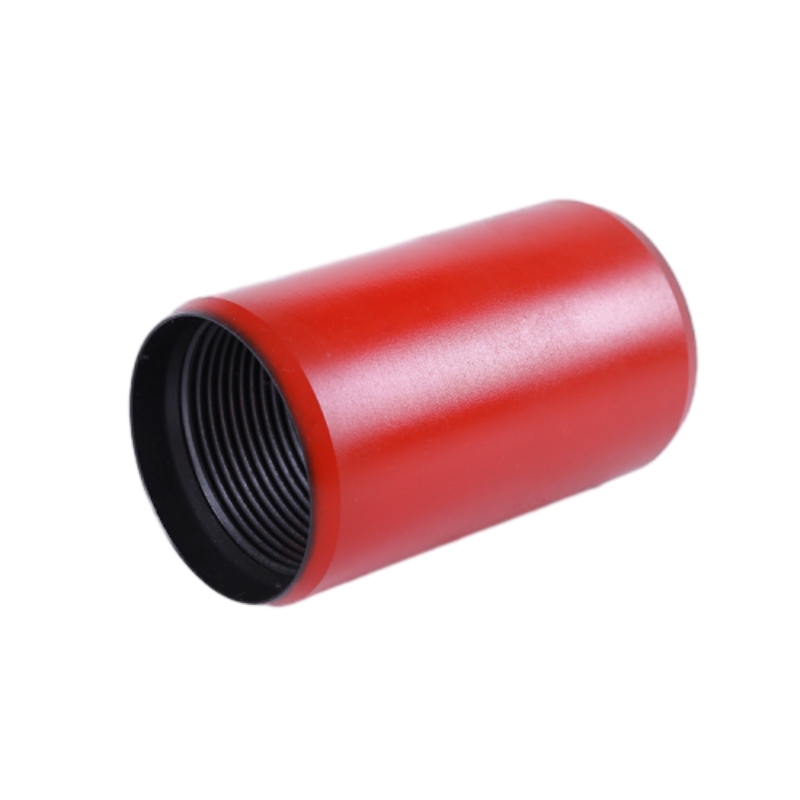
Technical Specifications and Performance Parameters
Understanding the critical technical specifications is vital for selecting the appropriate steel coupling for any industrial application. These parameters define the coupling's capabilities and limitations.
Key Specifications for Tubing Couplings
- **Material:** As discussed, dictates corrosion resistance, strength, and temperature limits.
- **Size/Nominal Pipe Size (NPS) / Outside Diameter (OD):** Defines compatibility with existing tubing or piping systems.
- **Pressure Rating:** Maximum allowable working pressure (MAWP) at a given temperature, usually expressed in PSI or Bar.
- **Temperature Range:** Minimum and maximum operating temperatures.
- **Connection Type:** Threaded (NPT, BSPT, UNF), Compression (ferrule-based), Flanged, Welded, Quick-Connect.
- **Seal Material:** For compression or quick-connect types (e.g., Viton, EPDM, PTFE), dictates chemical compatibility and temperature range.
- **End Configuration:** Male/Female thread, tube end, hose barb.
- **Testing Standards:** Compliance with ISO, ASTM, ANSI, ASME.
Typical Product Specification Table: Compression Tubing Coupling (Stainless Steel 316)
| Parameter | Specification | Notes |
|---|---|---|
| Material | ASTM A479 316 Stainless Steel | Excellent corrosion resistance |
| Tube OD Size Range | 1/4" to 2" (6mm to 50mm) | Common industrial sizes |
| Max. Working Pressure | Up to 6000 PSI (413 Bar) | Pressure derating applies at higher temperatures |
| Temperature Range | -65°F to 850°F (-54°C to 454°C) | Dependent on seal material if applicable |
| Connection Type | Double Ferrule Compression | Provides strong, leak-tight seal |
| Thread Type (if applicable) | NPT, BSPT (various sizes) | Conforms to ANSI/ASME B1.20.1 |
| Hardness | Max. 80 HRB | Ensures ductility for reliable sealing |
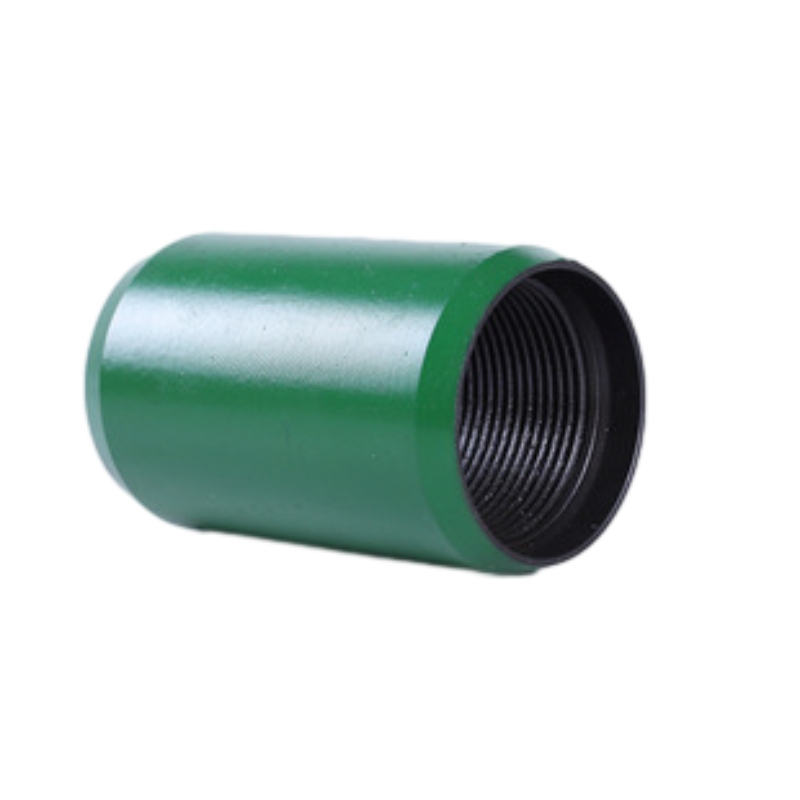
Diverse Application Scenarios and Industries Served
The versatility of tubing coupling solutions makes them indispensable across a multitude of industries. Their primary function is to ensure system integrity and efficient fluid/gas transfer in demanding conditions.
Target Industries:
- **Petrochemical and Oil & Gas:** Critical for process lines, instrumentation, hydraulic and pneumatic control systems, wellhead equipment, and refineries. Applications include crude oil, natural gas, refined products, and various chemical reagents under high pressure and temperature. Corrosion resistance is paramount here.
- **Chemical Processing:** Used for transferring corrosive chemicals, acids, and alkalis. Requires materials like 316L SS, Hastelloy, or PTFE-lined options to prevent chemical attack.
- **Power Generation:** In steam lines, cooling systems, fuel lines, and instrumentation for nuclear, thermal, and renewable energy plants. Requires high-temperature and high-pressure resilience.
- **Metallurgy:** For cooling systems in furnaces, hydraulic lines in heavy machinery, and gas supply lines in steel mills. Durability and resistance to high temperatures are key.
- **Water Supply & Drainage / Wastewater Treatment:** For connecting pipes in filtration systems, pumping stations, and distribution networks. Materials like galvanized steel or PVC for corrosion resistance in aqueous environments. Steel couplings for pipe are often used for larger infrastructure.
- **Pharmaceutical and Biotechnology:** For ultra-pure water systems, process lines, and clean-in-place (CIP) systems. Requires hygienic designs and materials that meet FDA or USP Class VI standards.
- **Semiconductor Manufacturing:** For ultra-high purity gas and chemical delivery systems. Demands extremely precise connections and minimal particulate generation, often requiring orbital welding or specialized face-seal fittings.
- **Aerospace and Defense:** In hydraulic, pneumatic, and fuel systems, where lightweight, high-strength, and vibration-resistant couplings are essential.
- **Vacuum Systems:** Essential for maintaining vacuum integrity in scientific instruments, manufacturing processes (e.g., semiconductor), and research facilities, often utilizing specific vacuum hose coupling designs.
Demonstrated Advantages in Typical Scenarios:
- **Energy Saving:** Leak-free connections prevent energy loss in pneumatic and hydraulic systems, ensuring optimal pressure and flow, which directly translates to reduced operational costs. A compromised vacuum hose coupling, for example, can drastically increase energy consumption for vacuum pumps.
- **Corrosion Resistance:** In aggressive chemical processing, couplings made from high-grade stainless steel or exotic alloys prevent material degradation, leading to extended service life and reduced downtime. This is a critical advantage for steel couplings for pipe in corrosive environments.
- **Enhanced Safety:** Reliable steel couplings for pipe minimize the risk of hazardous fluid leaks or gas emissions, protecting personnel and the environment, and ensuring compliance with safety regulations like OSHA.
- **Reduced Maintenance:** Durable, high-quality couplings require less frequent replacement and repair, lowering overall maintenance expenses and increasing system uptime.
- **Ease of Installation:** Modern compression fittings, for example, offer quick and tool-free installation, reducing labor costs and project timelines compared to welding or flanging in certain applications.
Strategic Vendor Comparison for Tubing Couplings
Selecting the right vendor for industrial tubing coupling solutions is a critical procurement decision that extends beyond initial purchase price. B2B buyers must evaluate several key factors to ensure long-term value, reliability, and support.
Key Evaluation Criteria for Coupling Vendors:
- **Product Quality & Certifications:** Look for vendors with ISO 9001 certification, adherence to ASTM, ANSI, ASME standards, and third-party validation of performance (e.g., pressure ratings, material composition).
- **Material Sourcing & Traceability:** Transparency in material origins and full traceability from raw material to finished product is crucial, especially for critical applications.
- **Technical Expertise & Support:** A vendor's ability to provide application-specific engineering advice, CAD models, and detailed technical documentation is invaluable.
- **Customization Capabilities:** The ability to provide custom sizes, materials, or configurations for unique project requirements.
- **Lead Times & Supply Chain Reliability:** Consistent on-time delivery and a robust supply chain are essential to avoid project delays.
- **After-Sales Support & Warranty:** Comprehensive warranty, readily available spare parts, and responsive technical support post-purchase.
- **Cost-Effectiveness (TCO):** Consider the total cost of ownership, including initial purchase, installation, maintenance, and potential downtime, rather than just the upfront price.
Vendor Comparison Matrix (Illustrative Example):
| Feature/Criterion | Vendor A (Premium) | Vendor B (Mid-Tier) | Vendor C (Economy) |
|---|---|---|---|
| Product Range | Extensive (Standard & Exotic) | Standard Industrial Sizes | Limited, Basic Offerings |
| Certifications | ISO 9001, ASTM, ASME, NACE | ISO 9001, Basic ASTM | Basic QA, Self-Declared |
| Customization | High Capability, Engineering Support | Limited Custom Options | Minimal to None |
| Lead Time (Standard) | 1-3 Weeks | 2-4 Weeks | 3-6 Weeks (Variable) |
| Warranty | Lifetime (Product Defects) | 5 Years | 1 Year |
| Technical Support | Dedicated Engineers, 24/7 | Regional Support, Business Hours | Email/Web Form Only |
Customized Solutions and Application Case Studies
While standard steel couplings for pipe and tubing meet many industrial needs, unique operational challenges often necessitate customized coupling solutions. Top-tier manufacturers excel at collaborating with clients to engineer bespoke products that address specific performance, material, or dimensional requirements.
Customization Capabilities Include:
- **Special Materials:** Fabrication from exotic alloys like Monel, Titanium, or Super Duplex for extreme corrosion, temperature, or pressure.
- **Unique Geometries:** Designing couplings for non-standard tube sizes, highly compact spaces, or specific flow characteristics.
- **Hybrid Connection Types:** Combining different connection methods (e.g., flanged to compression) within a single coupling.
- **Surface Treatments:** Specialized coatings for enhanced wear resistance, anti-galling properties, or aesthetic finishes.
- **Application-Specific Testing:** Performing tailored tests (e.g., helium leak detection for vacuum, dynamic vibration testing) beyond standard protocols.
- **Integrated Features:** Incorporating ports for instrumentation, specialized O-ring grooves, or specific mounting options.
Application Case Study 1: Offshore Oil & Gas Platform
**Challenge:** A major energy company needed reliable steel coupling solutions for hydraulic control lines on a new deep-sea drilling platform. The environment presented extreme pressures (up to 10,000 PSI), corrosive seawater, and constant vibration, requiring components with exceptional fatigue resistance and zero leakage. Standard 316L stainless steel couplings showed signs of stress corrosion cracking in preliminary tests.
**Solution:** Working with a specialized manufacturer, custom tubing coupling units were designed using Super Duplex stainless steel (UNS S32750) for superior corrosion and pitting resistance. The couplings featured a modified double-ferrule compression design with enhanced anti-vibration features and were subjected to rigorous hyperbaric and fatigue testing conforming to NORSOK standards. The manufacturer also provided detailed installation training to the client's offshore team.
**Outcome:** The customized couplings demonstrated exceptional performance, exceeding projected service life and significantly reducing the risk of costly subsea leaks, ultimately contributing to the platform's operational efficiency and environmental safety. The system has operated flawlessly for over 8 years, a testament to the robust design and material selection.
Application Case Study 2: Pharmaceutical Cleanroom Facility
**Challenge:** A pharmaceutical manufacturer required ultra-clean, crevice-free connections for their new WFI (Water-for-Injection) distribution loop within a sterile cleanroom. The existing system utilized sanitary clamps, which, while effective, were prone to overtightening and required frequent gasket replacement, increasing maintenance and contamination risks. They sought a more robust and hygienic, yet easy-to-maintain, connection method, specifically for various sizes of steel pipe coupling.
**Solution:** The client opted for specialized orbital-weldable steel couplings for pipe, meticulously manufactured from electropolished 316L stainless steel. These couplings were designed with smooth internal bore finishes (Ra vacuum hose coupling version was also provided for instrument lines.
**Outcome:** The new coupling system drastically reduced bioburden risks and improved the system's cleanability. The robust, permanently welded connections eliminated gasket maintenance and provided superior process integrity, contributing to significant operational savings and enhanced product quality, allowing the facility to maintain strict FDA compliance with greater ease.
Authoritativeness and Trustworthiness: Our Commitment
Our dedication to engineering excellence and customer satisfaction is underpinned by rigorous quality assurance and transparent practices. We ensure every tubing coupling we supply meets the highest industry standards.
Certifications and Compliance:
- **ISO 9001:2015 Certified:** Our manufacturing processes adhere to the highest international quality management standards, ensuring consistent product quality and continuous improvement.
- **Material Traceability:** All our steel pipe coupling products come with full material traceability reports (MTRs) to EN 10204 3.1 or 3.2, ensuring verifiable chemical composition and mechanical properties.
- **ANSI/ASME & ASTM Compliance:** Our products are designed and tested to meet or exceed relevant ANSI/ASME B1.20.1 (pipe threads), B31.1 (Power Piping), B31.3 (Process Piping), and ASTM material specifications.
- **CE Marking:** Products conform to European safety, health, and environmental protection requirements where applicable.
Customer-Focused Support:
Frequently Asked Questions (FAQ)
- Q: How do I select the correct material for my tubing coupling?
- A: Material selection depends on operating pressure, temperature, the fluid/gas being transferred (chemical compatibility), and environmental conditions. Our technical team can assist you in selecting the optimal material based on your specific application data.
- Q: What is the typical lead time for standard products?
- A: For most standard products and common sizes, our lead time is typically 1-3 weeks. Custom orders or specialized materials may require 4-8 weeks. We offer expedited shipping options for urgent requirements.
- Q: What warranty do you offer on your products?
- A: We stand behind the quality of our tubing coupling products with a comprehensive 5-year warranty against manufacturing defects. This commitment ensures peace of mind for our clients, guaranteeing performance under specified operating conditions.
- Q: Do you provide installation guidelines or training?
- A: Yes, detailed installation instructions are provided with every product. For complex systems or large projects, we offer on-site or virtual training sessions by our certified technicians to ensure correct installation and optimal performance of our steel pipe coupling solutions.
Lead Time and Fulfillment:
We maintain a robust inventory of common coupling components and finished goods to ensure prompt delivery. Our advanced logistics system allows us to fulfill standard orders within 1-3 weeks, with emergency orders often dispatched within 24-48 hours. For larger projects or custom fabrication, lead times are communicated clearly during the quotation process and rigorously managed to meet project schedules.
Warranty Commitments:
Every product is backed by our industry-leading 5-year warranty, covering material and manufacturing defects under normal operating conditions. Our commitment is to provide products that perform reliably for their intended service life, reducing overall total cost of ownership for our clients.
Customer Support:
Our dedicated customer support team and technical experts are available to assist with product selection, technical inquiries, installation guidance, and troubleshooting. We offer responsive service via phone, email, and live chat, ensuring that our clients receive timely and effective assistance whenever needed.
Conclusion
The demand for high-performance fluid connection solutions continues to grow across diverse industrial landscapes. The selection of a reliable, technically sound coupling is not merely a purchase but an investment in the safety, efficiency, and longevity of critical infrastructure. By prioritizing factors such as material integrity, precision manufacturing, adherence to rigorous testing standards, and robust vendor support, B2B decision-makers can ensure optimal operational outcomes and achieve significant long-term value. Our commitment to quality, innovation, and client partnership positions us as a trusted provider of advanced coupling technologies.
References
- American Society of Mechanical Engineers. ASME B31.3 Process Piping. ASME International, 2020.
- International Organization for Standardization. ISO 9001:2015 - Quality management systems — Requirements. ISO, 2015.
- ASTM International. ASTM A276/A276M - Standard Specification for Stainless Steel Bars and Shapes. ASTM, 2017.
- NACE International. NACE MR0175/ISO 15156 - Petroleum and Natural Gas Industries - Materials for use in H2S-containing environments in oil and gas production. NACE, 2015.
- Fluid Power Society. "Hydraulic and Pneumatic Systems: Design and Maintenance." Technical Journal, Vol. 45, No. 3, 2022.
-
Tubing Crossover - API Compatible, Custom Sizes, In StockNewsNov.10,2025
-
Tubing Coupling | High-Strength, Leak-Proof Steel CouplingsNewsNov.10,2025
-
Wholesale API Threading Casing Coupling | API 5CT, Fast ShipNewsNov.10,2025
-
Pup Joint Supplier | API Certified, Custom, Quick ShipNewsNov.10,2025
-
Pup Joint Manufacturers | Precision Machined, Fast DeliveryNewsNov.10,2025
-
Tubing Coupling | Precision Steel, Leak-Proof, Fast DeliveryNewsNov.03,2025
